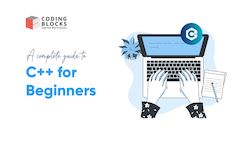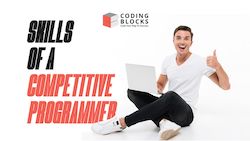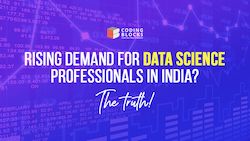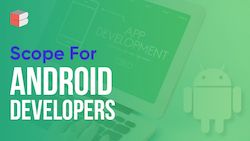Why
Coding Blocks?
With time tested, result oriented pedagogy & industry aligned courses offering project based learning, our courses are your perfect investment into your career. Get the best in the industry!

Superb mentors
Best in class mentors from top Tech schools and Industry favourite Techies are here to teach you.

Industry-vetted curriculum
Best in class content, aligned to the Tech industry is delivered to you to ensure you are a darling of the Tech industry.

Project based learning
Hands on learning pedagogy with live projects to cover practical knowledge over theoretical one.

Superb placements
Result oriented courses with placement across all genres, students as well as Working professionals.
Courses based on subjects
Learn and grow as a developer with our Result oriented pedagogy and project based learning.
About Data Structures and Algorithms
Data Structures and Algorithms are the building blocks of programming & required to write optimised code. They are also necessary to start development level programs like Web development and Android app development. These are the skills that are typically tested when students appear for Placement drives for Jobs and Internships. Ideal for students for first and second year of college and for those looking forward to Placements & Internships. This course is designed for absolute beginners and does not require any knowledge of coding.
This course includes
 350+
problems & 6 projects
350+
problems & 6 projectsFoundation, Basics and Advanced modules
 Progress
tracking and feedback
Progress
tracking and feedback Certificate of Excellence/Completion
Certificate of Excellence/Completion Placement
assistance
Placement
assistance Doubt
support
Doubt
support Curriculum designed for beginners, No coding experience required
Curriculum designed for beginners, No coding experience required
 Master Data structures and Algorithms using Java
Master Data structures and Algorithms using Java
This course includes
 350+
problems & 6 projects
350+
problems & 6 projectsFoundation, Basics and Advanced modules
 Progress
tracking and feedback
Progress
tracking and feedback Certificate of Excellence/Completion
Certificate of Excellence/Completion Placement
assistance
Placement
assistance Doubt
support
Doubt
support Curriculum designed for beginners, No coding experience required
Curriculum designed for beginners, No coding experience required
 Master Data structures and Algorithms using Python
Master Data structures and Algorithms using Python
This course includes
 350+
problems & 6 projects
350+
problems & 6 projectsFoundation, Basics and Advanced modules
 Progress
tracking and feedback
Progress
tracking and feedback Certificate of Excellence/Completion
Certificate of Excellence/Completion Placement
assistance
Placement
assistance Doubt
support
Doubt
support Curriculum designed for beginners, No coding experience required
Curriculum designed for beginners, No coding experience required
You can also seek Career counselling and Expert assistance in choosing your course or mode of study
Get Career adviceAbout Competitive programming
Competitive programming is generally the next step after learning Data structures and Algorithms and helps you write optimised and efficient code using minimalistic methodology. Knowledge of Competitive programming is required to prepare for and fare Coding competitions like Google Codejam, Facebook Hackercup, ACM-ICPC and additionally for cracking Big Tech orgs like Google, Meta, Arcesium, Zeta and so on. This course needs you to have handy knowledge of Data structures and Algorithms.
This course includes
 Elaborate
content covering Segment Trees, Binary Index / Fenwick Trees, Dynamic Programming, Bitmasking,
Greedy Algorithms, and Divide & Conquer
Elaborate
content covering Segment Trees, Binary Index / Fenwick Trees, Dynamic Programming, Bitmasking,
Greedy Algorithms, and Divide & ConquerExtensive Coverage of Maths & Number Theory Problems
 Progress
tracking and feedback
Progress
tracking and feedback Certificate of
Excellence/Completion
Certificate of
Excellence/Completion Placement
assistance
Placement
assistance Doubt
support
Doubt
support Curriculum
designed for learners with knowledge of DSA
Curriculum
designed for learners with knowledge of DSA
You can also seek Career counselling and Expert assistance in choosing your course or mode of study
Get Career adviceAbout Interview Preparation
These courses are designed specially for Pre-final and final year students who are actively initiating Preparation for Placement drives in Tech and IT organisations. These are also ideal for Working professionals in the 0-2 years Work experience range. Basis your goal, you can either be a beginner learning to code or someone who has handy knowledge of Data structures and Algorithms.
This course includes
 900+ curated
questions for acing Placements
900+ curated
questions for acing Placements Service,
Product and FAANG Preparation
Service,
Product and FAANG Preparation Progress
tracking and feedback
Progress
tracking and feedback Certificate of
Excellence/Completion
Certificate of
Excellence/Completion Placement
assistance
Placement
assistance Doubt
support
Doubt
supportcurriculum for Placements and expects you to have working knowledge of DSA
This course includes
 700+ curated
questions for acing Placements
700+ curated
questions for acing Placements Service,
Product and FAANG Preparation
Service,
Product and FAANG Preparation Progress
tracking and feedback
Progress
tracking and feedback Certificate of
Excellence/Completion
Certificate of
Excellence/Completion Placement
assistance
Placement
assistance Doubt
support
Doubt
supportcurriculum for Placements and expects you to have working knowledge of DSA
This course includes
 detailed notes and content of OS, DBMS, CN and System design
detailed notes and content of OS, DBMS, CN and System design one stop Study material (no need for any other reference material)
one stop Study material (no need for any other reference material) Progress tracking and feedback
Progress tracking and feedback Certificate of
Excellence/Completion
Certificate of
Excellence/Completion Placement
assistance
Placement
assistance Doubt support
Doubt supportcurriculum for Placements and expects you to have no experience in coding
This course includes
 150+ curated questions for acing Placements
150+ curated questions for acing Placements detailed content for FAANG Preparation
detailed content for FAANG Preparation Progress tracking and feedback
Progress tracking and feedback Certificate of
Excellence/Completion
Certificate of
Excellence/Completion Placement
assistance
Placement
assistance Doubt support
Doubt supportcurriculum for Placements and expects you to have working knowledge of DSA
You can also seek Career counselling and Expert assistance in choosing your course or mode of study
Get Career adviceAbout Web development
Web development is one of the most sought after fields in development for Software engineers. If making next-gen websites and converting ideas to reality excites you, Web development is the right choice for you. You will learn Full stack development on the most sought after frameworks, covering Frontend development, Backend development, Deployment, Scalability and Security. You need to know Coding and should have working knowledge of DSA to start Web development.
This course includes
 both Frontend and Backend modules with 10+ projects
both Frontend and Backend modules with 10+ projects detailed coverage of React
detailed coverage of React Progress tracking and feedback
Progress tracking and feedback Certificate of
Excellence/Completion
Certificate of
Excellence/Completion Placement assistance
Placement assistance Doubt support
Doubt supportcurriculum which would need you to have working knowledge of DSA

 System Design
System Design
This course includes
 10+ Case Studies which can be showcased in Resume
10+ Case Studies which can be showcased in Resume HLL & LLL concepts and their implementation
HLL & LLL concepts and their implementation Progress tracking and feedback
Progress tracking and feedback Certificate of
Excellence/Completion
Certificate of
Excellence/Completion Placement assistance
Placement assistance Doubt support
Doubt support Curriculum designed for learners with OOPS experience
Curriculum designed for learners with OOPS experience

 Dev Ops
Dev Ops
This course includes
 10+ Live Interactive projects
10+ Live Interactive projects operations, continuous integration, continuous delivery, automated build, test, and
deployment concepts and their implementation
operations, continuous integration, continuous delivery, automated build, test, and
deployment concepts and their implementation Progress tracking and feedback
Progress tracking and feedback Certificate of
Excellence/Completion
Certificate of
Excellence/Completion Placement assistance
Placement assistance Doubt support
Doubt support Curriculum designed for learners with Development experience
Curriculum designed for learners with Development experience
You can also seek Career counselling and Expert assistance in choosing your course or mode of study
Get Career adviceAbout Android App development
Android runs on more than 2.5 billion devices and if making superb Apps is what excites you, Android app development is the course for you. You will learn to build next-gen, user friendly apps using Kotlin from gounds-up. In addition, you will also learn how to pitch your apps and convert ideas to reality.You need to know Coding and should have working knowledge of DSA to start Android app development.
This course includes
 Elaborate content covering UI design, firebase, push notifications, hardware sensors,
networking and databases
Elaborate content covering UI design, firebase, push notifications, hardware sensors,
networking and databases Interaction with third-party libraries such as Google Maps, REST APIs etc with 5
projects
Interaction with third-party libraries such as Google Maps, REST APIs etc with 5
projects Progress tracking and feedback
Progress tracking and feedback Certificate of
Excellence/Completion
Certificate of
Excellence/Completion Placement assistance
Placement assistance Doubt support
Doubt supportcurriculum which would need you to have working knowledge of DSA
You can also seek Career counselling and Expert assistance in choosing your course or mode of study
Get Career adviceAbout Data science and Machine learning
Learn to play with data using techniques like data gathering, manipulation, cleaning and draw actionable insights post processing in Data science. In addition, master regression, supervised clustering and become an expert ML engineer. You need to be thorough with Python and Mathematics for these courses
This course includes
 12 projects with Data science curriculum covering Python Basics, Data Visualization,
Data Scraping, Web Scrappers & Data Cleaning
12 projects with Data science curriculum covering Python Basics, Data Visualization,
Data Scraping, Web Scrappers & Data Cleaning ML curriculum covering algorithms like Linear & Logistic Regression, Decision Trees,
Naive Bayes, Principal Component Analysis, Feature Engineering, T-SNE Visualizations, Deep
Learning & Reinforcement Learning
ML curriculum covering algorithms like Linear & Logistic Regression, Decision Trees,
Naive Bayes, Principal Component Analysis, Feature Engineering, T-SNE Visualizations, Deep
Learning & Reinforcement Learning Progress tracking and feedback
Progress tracking and feedback Certificate of
Excellence/Completion
Certificate of
Excellence/Completion Placement assistance
Placement assistance Doubt support
Doubt supportcurriculum which would need you to have working knowledge of Coding, OOPS and Python
This course includes
 Elaborate curriculum with 9 ML projects
Elaborate curriculum with 9 ML projects Supervised learning algorithms and Unsupervised learning, Deep learning, Computer
vision, Natural Language Processing & Reinforcement learning
Supervised learning algorithms and Unsupervised learning, Deep learning, Computer
vision, Natural Language Processing & Reinforcement learning Progress tracking and feedback
Progress tracking and feedback Certificate of
Excellence/Completion
Certificate of
Excellence/Completion Placement assistance
Placement assistance Doubt support
Doubt supportcurriculum which would need you to have working knowledge of Coding, OOPS and Python
 Python for Data science
Python for Data science
This course includes
 Elaborate curriculum with 4 projects
Elaborate curriculum with 4 projects Numpy, Pandas, OpenCV, Data visualisation, Data acquisition, SQL, Flask and Web
deployment
Numpy, Pandas, OpenCV, Data visualisation, Data acquisition, SQL, Flask and Web
deployment Progress tracking and feedback
Progress tracking and feedback Certificate of
Excellence/Completion
Certificate of
Excellence/Completion Placement assistance
Placement assistance Doubt support
Doubt supportcurriculum which would need you to have working knowledge of Coding, OOPS and Python
You can also seek Career counselling and Expert assistance in choosing your course or mode of study
Get Career adviceAbout Micro courses
Browse through an array of short term courses aimed at skillifying you for your goals, be it mastering yourself for FAANG or getting a hang of new technology.

 Dynamic Programming - Must Do Problem Set!
Dynamic Programming - Must Do Problem Set!
This course includes
 26 specially curated problems in DP
26 specially curated problems in DPDetailed discussion on DP concepts, learn lesser known tricks and all flavours in DP
 Progress tracking and feedback
Progress tracking and feedback Certificate of
Excellence/Completion
Certificate of
Excellence/Completion Placement
assistance
Placement
assistance Doubt support
Doubt support Curriculum designed for learners with coding experience
Curriculum designed for learners with coding experience

 Data Structures in Real Life Projects
Data Structures in Real Life Projects
This course includes
 9 projects which can be showcased in Resume
9 projects which can be showcased in Resume Javascript concepts and their implementation
Javascript concepts and their implementation Progress tracking and feedback
Progress tracking and feedback Certificate of
Excellence/Completion
Certificate of
Excellence/Completion Placement
assistance
Placement
assistance Doubt support
Doubt support Curriculum designed for learners with DSA experience
Curriculum designed for learners with DSA experience

 Graph Algorithms
Graph Algorithms
This course includes
 Mini project for hands-on learning
Mini project for hands-on learning Curated questions on Graph algorithms
Curated questions on Graph algorithms Progress tracking and feedback
Progress tracking and feedback Certificate of
Excellence/Completion
Certificate of
Excellence/Completion Placement
assistance
Placement
assistance Doubt support
Doubt support Curriculum designed for learners with DSA experience
Curriculum designed for learners with DSA experience

 Dynamic Programming
Dynamic Programming
This course includes
 100+ DP challenges
100+ DP challenges Curriculum on Digit DP, DP on Bitmasking and SOS DP
Curriculum on Digit DP, DP on Bitmasking and SOS DP Progress tracking and feedback
Progress tracking and feedback Certificate of
Excellence/Completion
Certificate of
Excellence/Completion Placement
assistance
Placement
assistance Doubt support
Doubt support Curriculum designed for learners with DSA experience
Curriculum designed for learners with DSA experience

 Python for Developers Master Course
Python for Developers Master Course
This course includes
 9 projects
9 projects Curriculum on DSA and OOPS in Python and Web dev using Python
Curriculum on DSA and OOPS in Python and Web dev using Python Progress tracking and feedback
Progress tracking and feedback Certificate of
Excellence/Completion
Certificate of
Excellence/Completion Placement
assistance
Placement
assistance Doubt support
Doubt support Curriculum designed for learners with DSA experience
Curriculum designed for learners with DSA experience

 Java Collections Framework
Java Collections Framework
This course includes
 detailed curriculum on Collections with all APIs
detailed curriculum on Collections with all APIs techniques for writing efficient and clean code
techniques for writing efficient and clean code Progress tracking and feedback
Progress tracking and feedback Certificate of
Excellence/Completion
Certificate of
Excellence/Completion Placement
assistance
Placement
assistance Doubt support
Doubt support Curriculum designed for learners with DSA experience
Curriculum designed for learners with DSA experience

 Selenium with Python
Selenium with Python
This course includes
 detailed curriculum on Web Automation using the Selenium framework
detailed curriculum on Web Automation using the Selenium framework curriculum for all major Selenium libraries and components
curriculum for all major Selenium libraries and components Progress tracking and feedback
Progress tracking and feedback Certificate of
Excellence/Completion
Certificate of
Excellence/Completion Placement
assistance
Placement
assistance Doubt support
Doubt support Curriculum designed for learners with DSA experience
Curriculum designed for learners with DSA experience

 Digital Marketing Course
Digital Marketing Course
This course includes
 detailed curriculum on Web Automation using the Selenium framework
detailed curriculum on Web Automation using the Selenium framework curriculum for all major Selenium libraries and components
curriculum for all major Selenium libraries and components Progress tracking and feedback
Progress tracking and feedback Certificate of
Excellence/Completion
Certificate of
Excellence/Completion Placement
assistance
Placement
assistance Doubt support
Doubt support Curriculum designed for learners with DSA experience
Curriculum designed for learners with DSA experience

 Java for Class XII Board practicals
Java for Class XII Board practicals
This course includes
 detailed curriculum on Java Class XII boards
detailed curriculum on Java Class XII boards learn Java swing and associated components
learn Java swing and associated components Progress tracking and feedback
Progress tracking and feedback Certificate of
Excellence/Completion
Certificate of
Excellence/Completion Placement
assistance
Placement
assistance Doubt support
Doubt support Curriculum designed for learners with DSA experience
Curriculum designed for learners with DSA experience

 C++ for Class XII Boards
C++ for Class XII Boards
This course includes
 detailed curriculum on Class XII boards for C++
detailed curriculum on Class XII boards for C++ curriculum covers Coding, SQL, OOPs and Networking
curriculum covers Coding, SQL, OOPs and Networking Progress tracking and feedback
Progress tracking and feedback Certificate of
Excellence/Completion
Certificate of
Excellence/Completion Placement
assistance
Placement
assistance Doubt support
Doubt support Curriculum designed for learners with DSA experience
Curriculum designed for learners with DSA experience
You can also seek Career counselling and Expert assistance in choosing your course or mode of study
Get Career adviceAbout Bootcamps
Bootcamps are short workshops which pick and work on a specific skill or technology. These are conducted for quick skillification or getting a hang of newer frameworks or technologies. Pick the right one for you to get started.

 System Design
System Design
This course includes
 10+ Case Studies which can be showcased in Resume
10+ Case Studies which can be showcased in Resume HLL & LLL concepts and their implementation
HLL & LLL concepts and their implementation Certificate of
Excellence/Completion
Certificate of
Excellence/Completion Placement
assistance
Placement
assistance Curriculum designed for learners with OOPS experience
Curriculum designed for learners with OOPS experience
You can also seek Career counselling and Expert assistance in choosing your course or mode of study
Get Career adviceYou can also explore our Courses basis the mode of study
Choose how you learn!
Each learner has his or her own manner of learning and one model of teaching is not fit for all. At Coding Blocks, we realise this and therefore deliver programs in Classroom, Live interactive and Online guided learning models.
The most popular methods of learning opted by students who believe in perfection. This is extremely successful and result oriented because of strong Peer group, personal attention and round the clock availability of mentors.

Limited Batch Size

Individual attention

Awesome Peer group

Continuous feedback & monitoring

100% Course completion

Dedicated Doubt support

Dedicated Placement support

In-class Hackathons & Assignment sessions
Live interactive programs are a replica of the Classroom programs with all feature of the Classroom model except physical presence of the Mentor and absence of close interaction with the peer group. This model is extremely popular amongst students who want to learn from a popular mentor of choice but are separated demographically.

Medium Batch Size

Individual attention

Awesome Peer group

Continuous feedback & monitoring

100% Course completion

Dedicated Doubt support

Dedicated Placement support

In-class Hackathons & Assignment sessions
Online guided learning courses are driven by our state of the art e-learning portal. These programs carry the same legacy as our Classroom programs. In order to reinforce learning and assist students, we have made our Online guided learning programs “HYBRID”, meaning we have added Live classes of topics where we feel students need interaction with mentors. In addition, students can clear their doubts through Video calls or Chats with our mentors and TAs. If learners stay close to our centers, they can even visit our Physical centers and meet the mentors in person to resolve their doubts.

Highly Economical

Exhaustive content

Tech enabled integrated learning

Live booster classes

Visit physical center for Doubt resolution

Continuous feedback & monitoring

Dedicated Doubt support (optional)

Dedicated Placement support (optional)
Inspirational Success stories of CB Alumni
where hard work and determination meets victory!



Coding Blocks is the best choice I made in my career.
I always dreamt of making it
to the Tech bigwigs and after having a discussion with one of the mentors at Coding Blocks,
I decided that I will go with them.
Everyone here is so brilliant, passionate and
focussed.
Coding Blocks helped me in becoming an ace coder and then with Mock coding
rounds and experienced Industry coaches telling us how to crack various companies.
Wish Coding Blocks all the success in future, big thanks.


My coding journey began after 2nd year. Till then I had no clue what my future would look like. I joined CB just like any other student to get a decent placement after Btech, I won’t lie it was the need of the hour :p and was a bit skeptical too. I didn’t know if that’s what I wanted to do, but the more time I spent coding, talking to mentors, and discussing stuff with peers, the more I got hooked on coding. I guess after that there was no turning back. I got my dream job at Morgan Stanley. Morgan Stanley was my introduction to the corporate world - couldn’t have asked for a better place to start my career with. Even after reaching there I wanted to work for a product based company where I could work on client facing products and feel the rush that’s when finally TWITTER happened. Journey at Twitter has always been full of surprises (I kind of like the attention now I get when I say I work for Twitter, Yes Elon musk owns it now) but one thing which has always grown with time is learning be it domain wise, handling situations, dealing with people with different perspectives etc.


Choosing Coding Blocks has been one of the best decisions of my life.
I could easy
realise this when I first had a talk with my mentor. Teaching methodology, assignments,
hackathons, doubt resolution, everything was beyond compare.
We were pushed to
explore our limits and this shows us in the success we achieve.
A big thanks to
Coding Blocks and Kartik Mathur sir for everything.


Guidance is the most important aspect in success of an individual. One incorrect path you
take and it takes years to correct.
At Coding Blocks, you get the most genuine
advice on not just what to do but also how to do along with all the resources and CB stays
with you till you are a winner.
It is so good to be in touch with such a great
community of super energetic people, all striving towards excellence.
I must say CB
has a big role to play in my journey and CB rocks!!








Success stories at Coding Blocks 
















































Events and Workshops
NEWS


Times Education Icons’25:
Coding Blocks - Excellence in the field of Training for Placement Oriented Courses for IT Industry

Coding is a Game changer
- Varun Kohli, Coding Blocks

Teaching Coding to School students for free

Top 50 Organisatons in Education award - 2019

Changing the realm of Coding Education in India
Latest from the Blog
Read all blogs
Talk to our Learning Consultant!
Get a free counselling session from our experts



















